Moderate climbing brings you to the top of the Eaglet, the most prominent free-standing spire on the East Coast and one of the most unique spots in the Northeast.
Moderately-rated climbing leads to the top of the most prominent free-standing spire on the East Coast and the Northeast’s coolest summit—a picnic-table-sized peak with outstanding views of Franconia Notch.
Quick Facts
Distance: About a mile approach with 1,000 feet of ascent and three pitches of climbing
Time to Complete: Half day for most
Difficulty: ★★★
Scenery:★★★★★
Fees/Permits: None
Contact: https://www.nhstateparks.org/visit/state-parks/franconia-notch-state-park
Turn-By-Turn
The Cannon Mountain Tramway Parking Lot is the start and end point for a trip up the Eaglet. Getting there from I-93 is easy: Take exit 34B, drive under the overpass, and pull into the large parking lot almost immediately thereafter.

The Approach
The approach to the Eaglet begins on the multi-use path called the Pemi Trail which leaves from the south end of the Cannon Mountain Tramway parking lot. Follow the flat, paved Pemi Trail for about 10 minutes. Just after it goes through an underpass under I-93, look for a herd path heading uphill into the woods (it’s at the sharp right turn and marked with a bunch of rocks).
Follow the well-worn herd path uphill past a few boulders. After a few minutes, you’ll intersect with the Greenleaf Trail, and the approach trail (marked with a cairn) continuing straight uphill. Join the approach trail, which soon starts to steepen. After scrambling up a series of easy, intermittent steps, you’ll enter a small scree field that appears to have two exits—straight up, or up and right. Follow the latter option, ascending some blocky stairs.
After a bit more uphill, you’ll reach the base of the Eaglet. The start of the West Chimney is 10 to 15 feet left of where the approach trail hits the Eaglet’s base. There are a few nice spots here to transition from hiking to climbing. Expect the approach to take between 45 and 60 minutes.
As you’re getting ready, watch out for ropes coming down from above. The base area between the West Chimney’s start and the approach trail is where most parties rapping the Eaglet hit the ground.
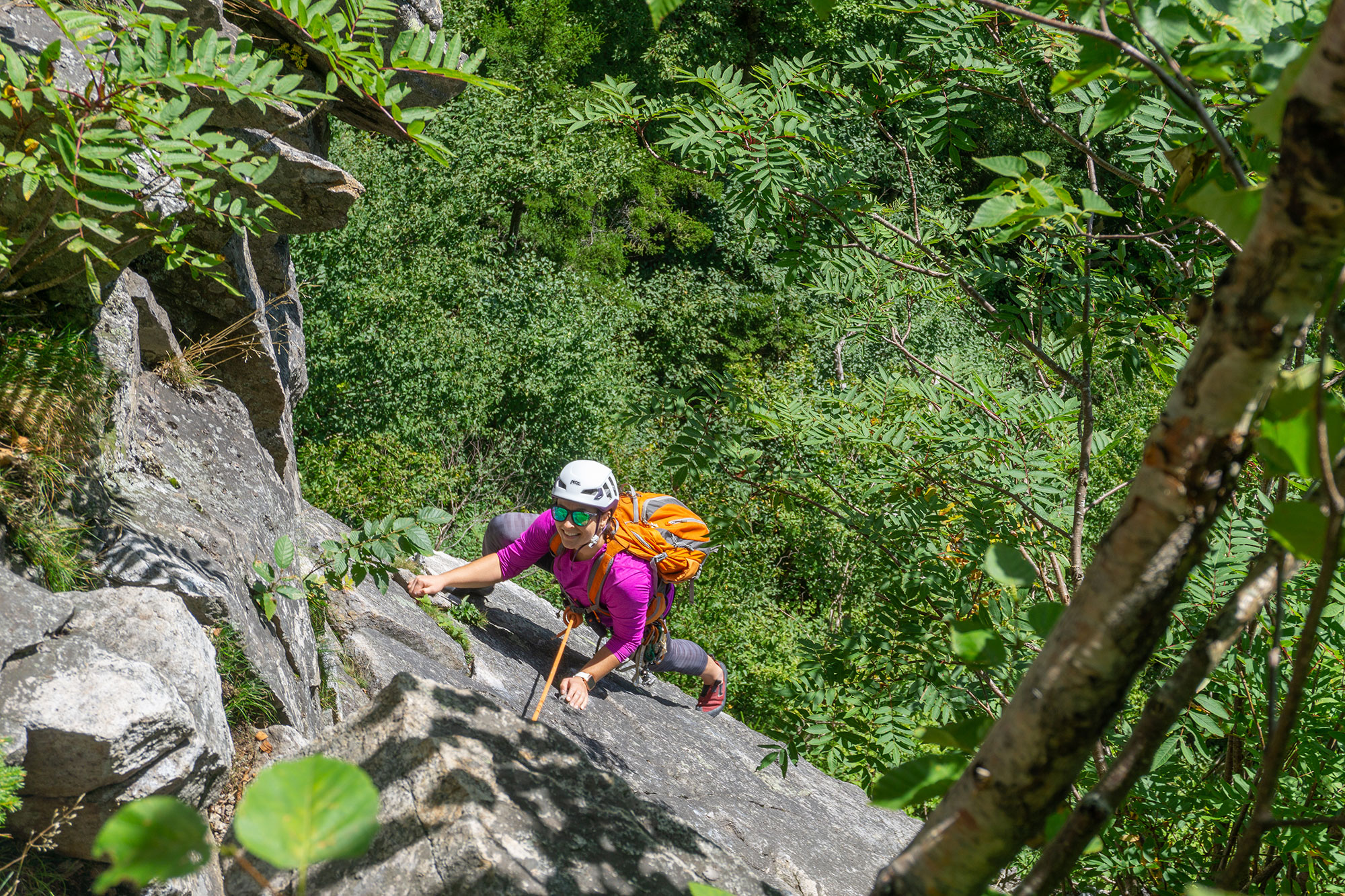
The First Pitch
The West Chimney doesn’t actually start out as a chimney. In fact, the first pitch is almost entirely 5.7 face climbing. It starts at the left edge of the platform, just before the ground drops away, and climbs an easy pedestal up toward a pin. Clip the pin (there’s gear below it too to protect that move), then climb up and left past the pin on good hands and a good-but-high left foot.
From here, diagonal your way up and left, aiming for a small open book-like feature. Plug some gear into the crack in the feature, work your hands over the top, then step left around the outside of the book, surmounting it with good hands. This marks the end of the difficulties on pitch one. Scamper up through some easy terrain to the ledge that marks the top of pitch one and either build a gear anchor at the slabby section below the big chimney or sling the block and/or small tree a little to the left.
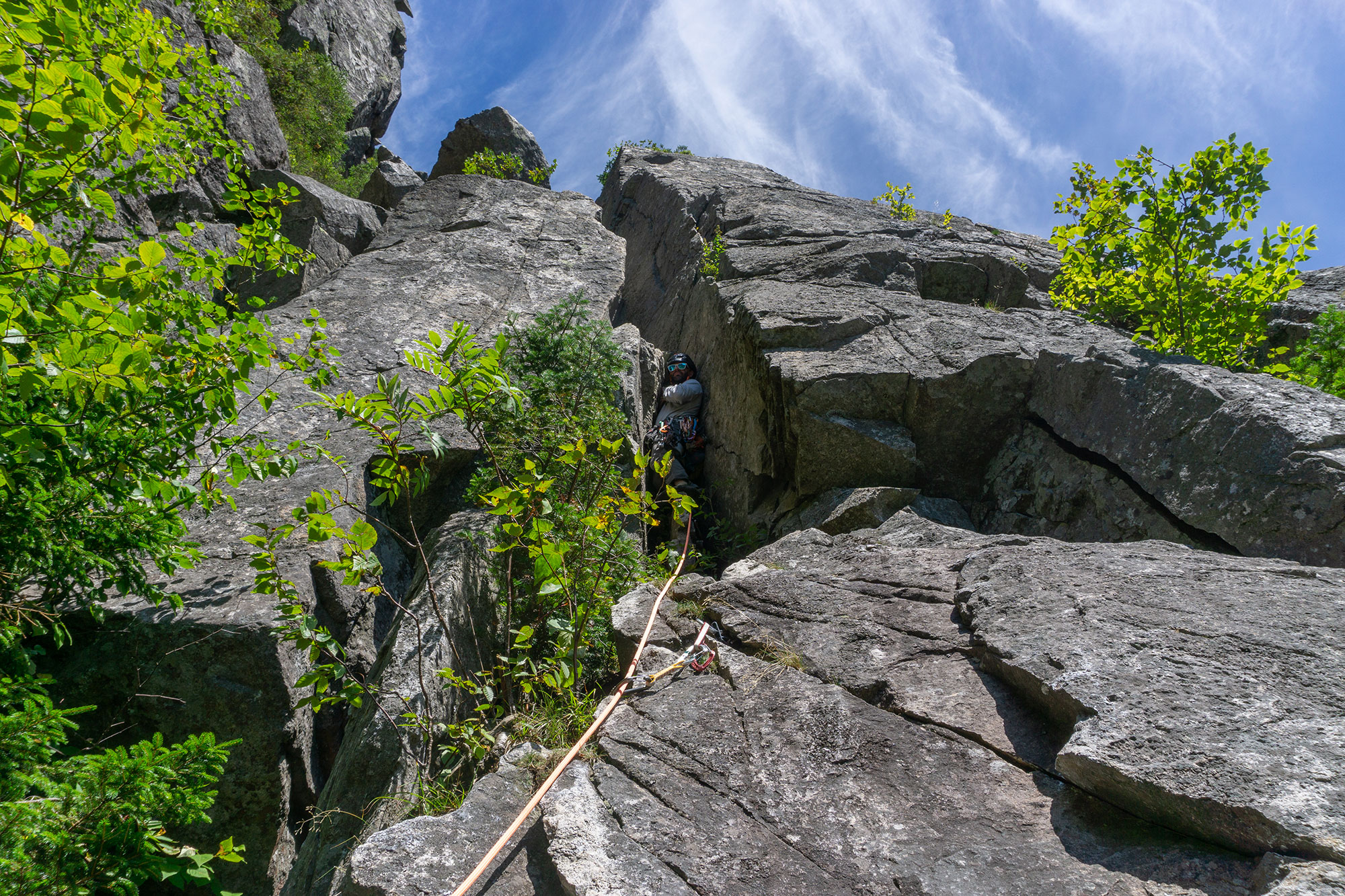
The Chimney
From the belay ledge on pitch one, it’s easy to spot two different chimney systems, one on the far left and one on the right. You’ll want the chimney on climbers’ right that you probably scoped out as you were finishing the first pitch.
To access this chimney system, face climb up about 10 feet (there are a few possible gear placements in here), then work your way into the chimney itself, which has three distinct sections.
The typical way to climb the first and second sections is to have your back to the Eaglet, with your right side wedged into the chimney. In the crack at the back of the chimney, there are options for medium and big gear along with good hands. There are also some handholds out to your left. Scoot your way up, keeping pressure on all your extremities.
The final section of the chimney is a boulder problem. Using small feet on your right and stellar hands above, work up so that you can slide onto a sloping platform on climbers’ left. From here, finish the boulder problem then scramble on easy terrain a few more feet, building an anchor at the nearby rap station or a little further up on the wall on climbers’ right. This pitch also goes at 5.7.
The blocky ledge here is an amazing position, with the final pitch of the Eaglet above you and Franconia Notch spilling out below you. If nobody is behind you, this is a great place to hang out.

The Money Pitch
The Eaglet’s final (also 5.7) pitch is its best. It’s airy, it’s super fun, and it also has what might be the route’s single hardest move, especially if you’re short. The pitch starts by climbing the blocky ledges up above the anchor, aiming for a bolt about halfway up the spire.
Although most can clip the bolt from the top of the blocky ledges, passing the bolt requires committing to some small hands on the spire itself along with a small foothold or two. But after committing, most climbers can reach the jugs above and then it’s smooth sailing up onto the left-facing ramp.
Once on the ramp, corkscrew left (clockwise) around the spire, past some ancient pins, and an option for a hand-sized piece (a Black Diamond Yellow #2 fits great in the crack). Placing a piece here is a good idea, as the next few moves to the top of the Eaglet are unprotected and quite airy, with the entire south side of the spire falling away below your feet. That said, the moves atop the summit block are actually pretty moderate—just work your feet up while using ridges on the summit block for hands. In moments, you’ll be clipping the two-bolt anchor at the top, cloving in, putting your second on belay, and basking in the sun on the dinner-table-sized summit. Once your partner arrives, enjoy a respite on one of the coolest spots in the Northeast.
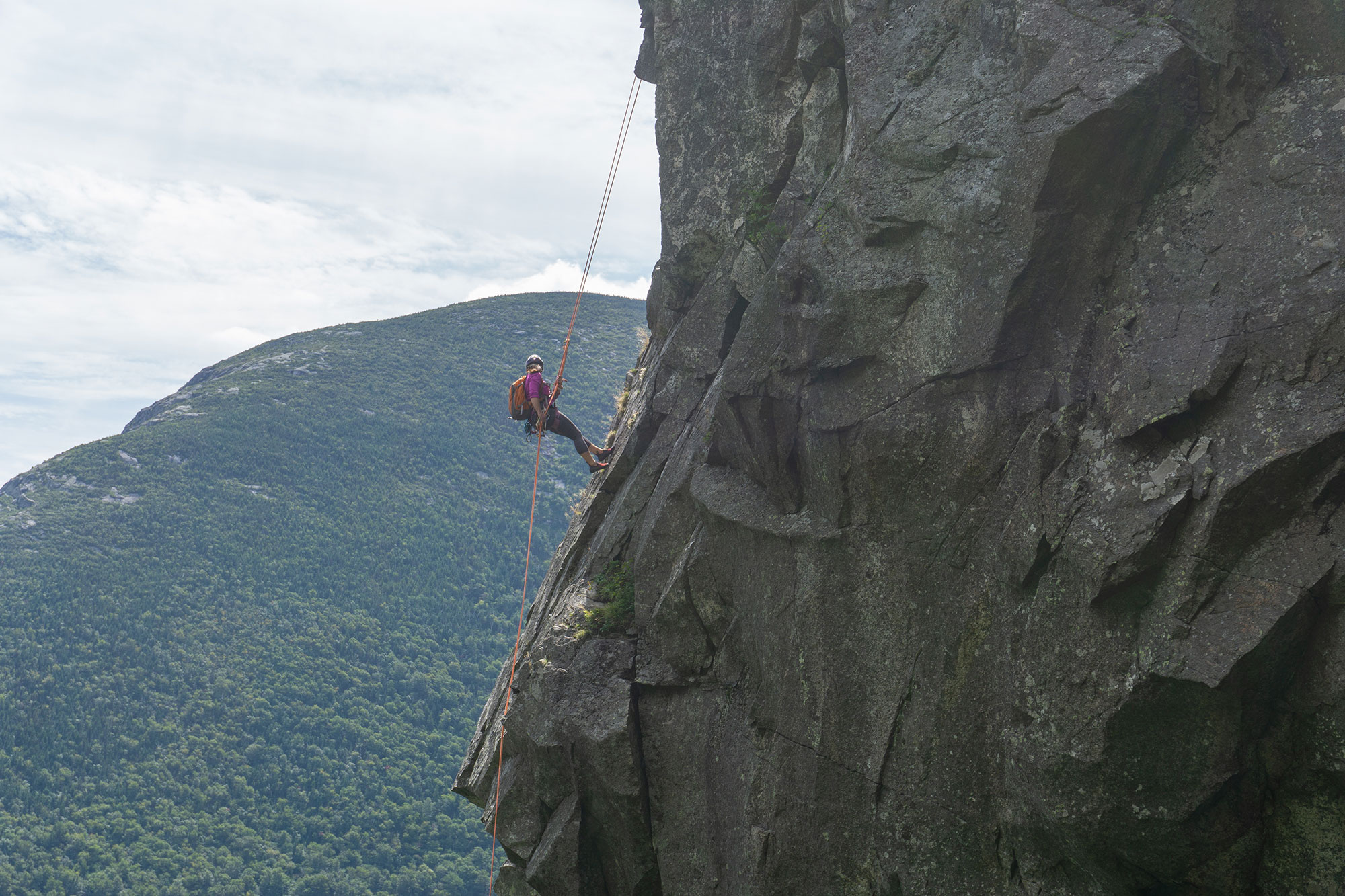
The Rappel
In addition to having two bolts on the top, the Eaglet also has two bolts with rap rings on the west face, just below the summit ledge. From these rap rings, it’s one double rope rappel to the ground, with two 60-meter ropes reaching the ground comfortably. (Some do two single rope raps with a 70-meter rope to the ground, but finding the second rappel station—which is on a ledge just above a roof near the spire’s mid-point—can be tricky.)
Whether you end up rappelling on one rope or two, two notes of caution about the rappel. First, the transition from the top of the Eaglet to the rap rings on the west face is a bit committing, as you’ll have to slide over the edge to get into proper rappelling position. Having already rigged your rappel device, with a third-hand backup and a catastrophe knot tied below, is a good way to add a margin of safety as you slide over the edge and weight the rappel.
Second, the rappel itself is quite airy, with a short free-hanging section as you drop by a large roof. Consider adding security either with a fireman’s belay or a belayed rappel if someone in your party is new to rappelling.
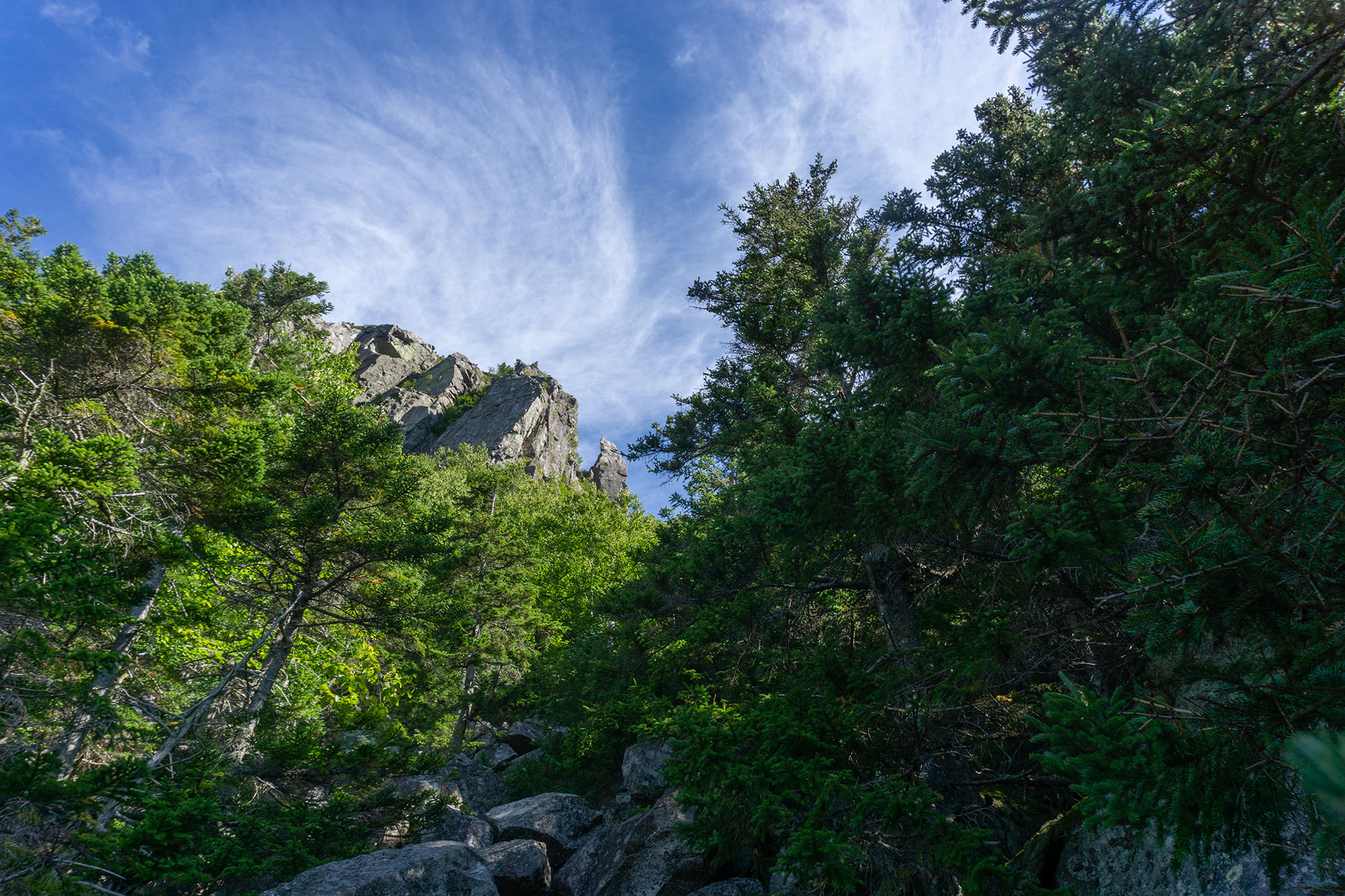
The Descent
The rappel leaves you in almost the exact spot where you started the climb. After you pull and coil your ropes and repack your climbing gear, descend via the approach trail you came up on. Just like on the ascent, there are a few steep sections on the descent. Expect a 30- to 45-minute walk back to the parking lot.
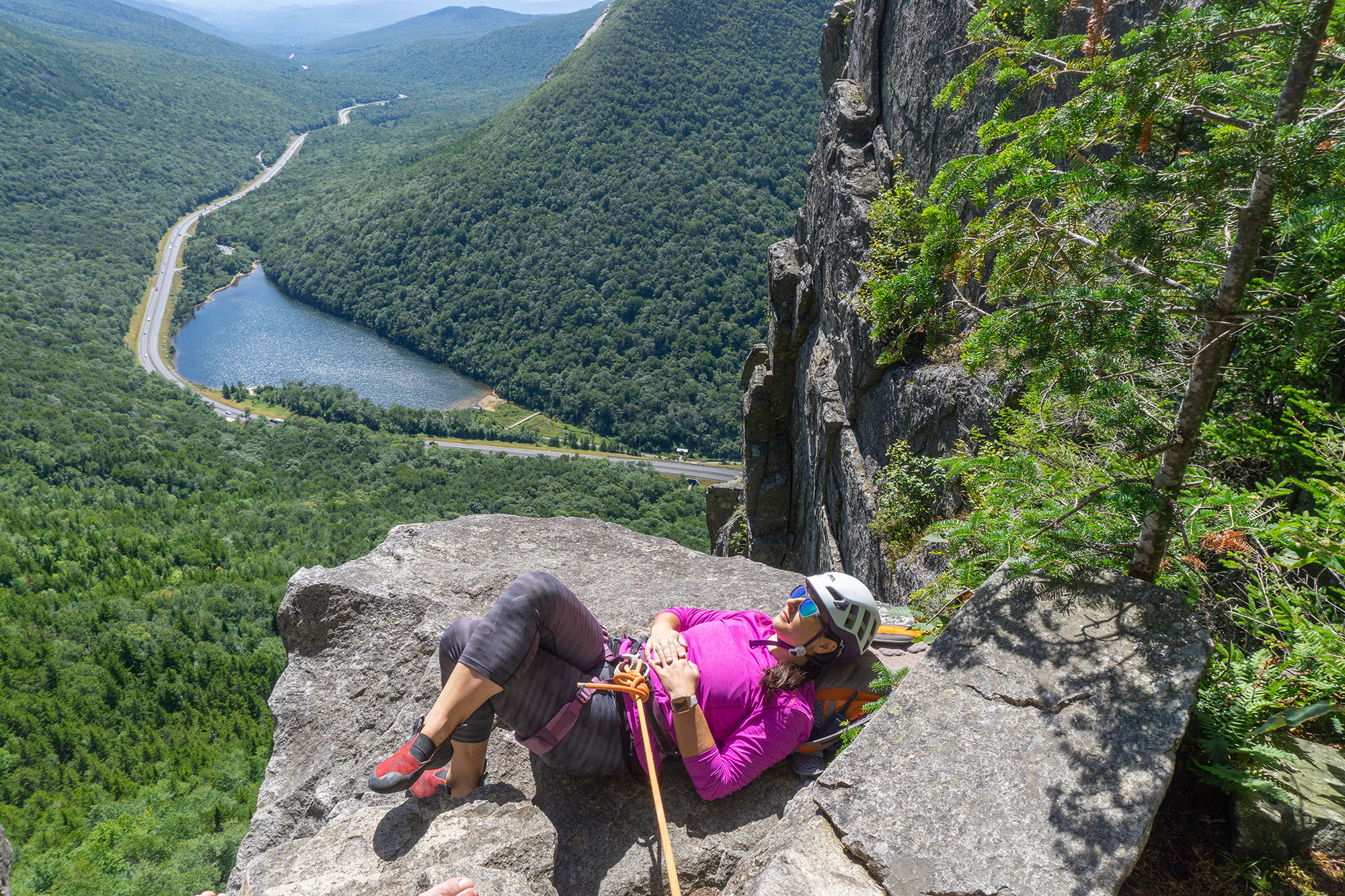
The Kit
- The hike up to the Eaglet is steep and at times scrambly; a pair of approach shoes like the Scarpa Crux (men’s/women’s) can provide some much-needed traction on your way to and from the climb.
- The Eaglet was first climbed in 1929, but there is ample opportunity to place modern protection. A single rack of Black Diamond cams from .4 through 4 is sufficient, but many will find doubling up on the .5, .75, and 1 beneficial.
- You won’t find much shade on top of the most prominent free-standing pillar on the East Coast, but the EMS Trail Run Ascent Hoodie (men’s/women’s) provides protection against the sun’s rays.
- The wind seems to funnel through Franconia Notch, which makes the Eaglet quite gusty; a jacket light the Cotopaxi Teca Half-Zip Windbreaker (men’s/women’s) protects against the wind while taking up minimal pack space and weighing next to nothing.
- A tether such as the Petzl Connect can add an additional level of safety when making the awkward transition from the top of the Eaglet to the rappel anchors.
- Two large ledges with a fair amount of loose rock and a considerable amount of traffic on the Eaglet make protecting your head a must. The Petzl Sirocco helmet provides lightweight protection, great ventilation, and maximum comfort—particularly valuable traits if you’re caught behind a slow party on a warm day.
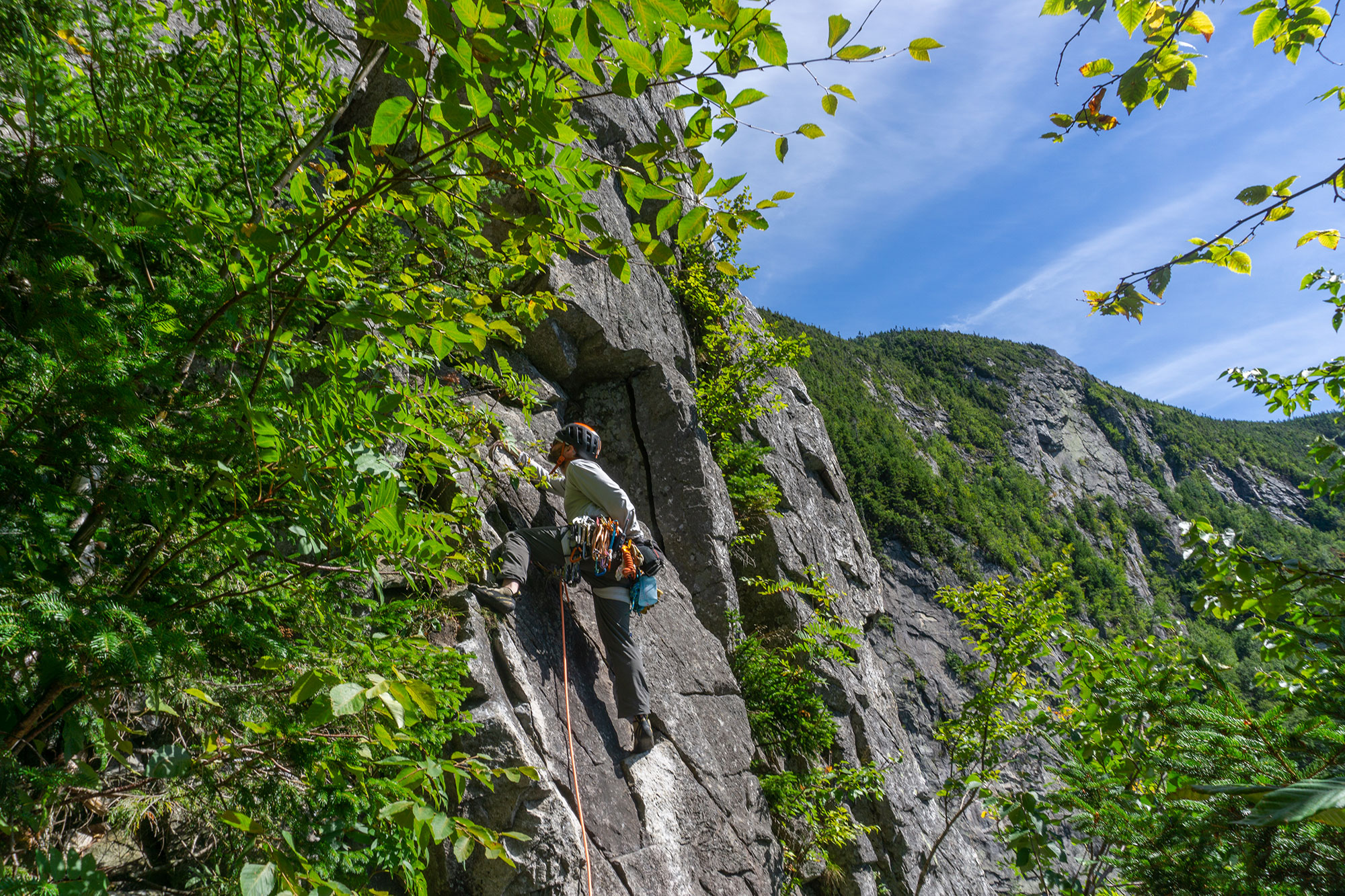
Keys to the Trip
- The Eaglet is often closed during the peregrine falcon breeding season. Check the U.S. Forest Service for route closures before you go.
- Carrying a pack is nice, however, many climbers will find it easier to ascend the chimney pitch without one. There are numerous out-of-the-way places to tuck your pack at the base of the climb.
- The Eaglet is a half-day trip for most parties. Consider stopping at Rumney if you came from the south and are looking for more moderate multi-pitch climbing on your way home. Want to keep plugging gear? Moderate trad climbing is found just up the road at Artist Bluff and Echo Crag.
- The Eaglet is a classic! So is the Woodstock Inn Brewery located just a few minutes south on I-93. Try the Nasty Nachos kitchen-sink style and wash them down with a Pig’s Ear.
- Reward yourself after a day on the Eaglet with a scoop or two from Udderly Delicious on Main Street in Lincoln.
- People have been climbing the Eaglet for almost a century and you can learn all about its ascents over the years with a stop at the Mountain Wanderer Bookstore. This small shop in Lincoln specializes in outdoor recreation and travel guidebooks and maps and is a great palace to brush up on the area’s history or start forming plans for another adventure.
Current Conditions
Have you done the Eaglet recently? Post about your experience and any tips you have in the comments for others!
Tim Peck and Doug Martland
Tim and Doug met long ago at the Eastern Mountain Sports in Canton, Massachusetts. Bonding over a love of slick Quincy Quarry granite, White Mountain sufferfests, and scheming up adventures while folding tee-shirts, today Tim and Doug collaborate to write about their favorite outdoor activities and occasionally get nostalgic about tee-shirt tables.
Related Posts
April 12, 2024
Explore Like a Local: The Outdoor Mecca of North Conway, NH
There's a lot to love about this New…
April 3, 2024
5 Things To Do in the Boston Area During Mud Season
Adventure opportunities are abundant…





